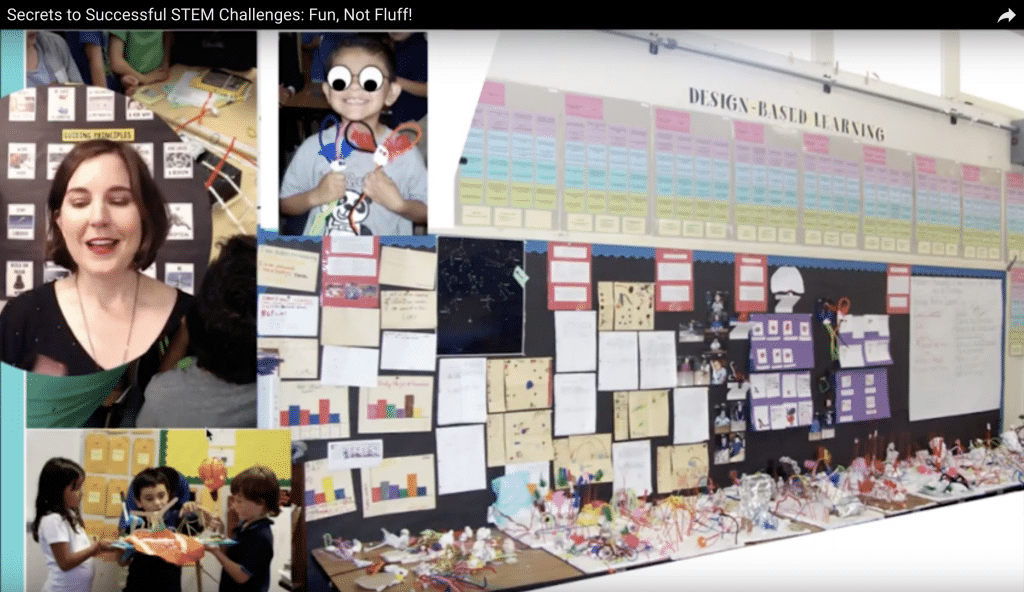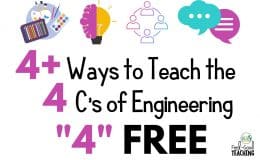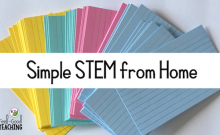Let me start by saying I have nothing inherently against makerspaces, tinker labs, “simple” STEM centers, task cards, and activities. They can be great — in much the same way your favorite breakfast cereal is “part” of a complete breakfast.
Quick note: There are STEM resources coined as “simple” STEM that refer to the simplicity of the materials needed and/or teacher setup. That isn’t what I’m referring to here.
The issue is with another kind of “simple” STEM — STEM that is easy. STEM that can be done in a few minutes. STEM that is only a reward for early finishers. STEM that is fun, makes students happy and doesn’t challenge them much or create too much drama.
Here’s the problem: simple STEM usually doesn’t get to the heart of deep problem-solving. In order to get there, students must work through the engineering design process and practice the 4 C’s of Engineering (communication, collaboration, critical thinking, and creativity). Much of that is missing in most “quick & easy” STEM activities.
I worry that in our rush to do a little bit of everything, much of what we’re doing doesn’t achieve the intended results. Life is not a sitcom; problems don’t resolve cleanly at the end of 30 minutes. The challenges our kids will face as adults are unfathomable to us now. We need to prepare them to not buckle at the sight of complicated problems, but to push forward with patience and perseverance. They need to have practiced the art of failing and bouncing back. They need experience with analyzing solutions to problems, making changes, and trying again.
Not to get apocalyptic on you, but … “simple” problem solving ain’t gonna cut it.
I walked through all of this in a Facebook live session. I’ll embed a replay below. If you’re looking for all the links I mention, head to the Facebook post, YouTube, or TpT.
And maybe this isn’t resonating with you. A lot depends on how you run your maker spaces and centers, to be sure. And just in case you’re cursing my name wherever you are, let me explain myself with an ELA analogy to take the steam out of this a bit (terrible pun intended).
Imagine you are teaching your kids how to become writers. You have an eye on that goal and everything that comes with it: completed, developed stories and essays that have structure, creativity, voice, and use the language beautifully.

Are quick writes themselves bad? No, of course not! Everything is about balance. Quick writes are great when used in conjunction with the writing process and giving and getting feedback. By themselves though, quick writes and journaling won’t give students the tools they need to develop into writers.
So it makes sense that STEM Challenges and activities work the same way. “Quick & Easy” STEM won’t develop the same skills going through the engineering design process will.
Let’s reflect on why STEM has become so popular in the first place. It’s because, when done well, it gives students opportunities to build deep critical thinking and problem-solving skills, apply content learning in new situations, and develop grit, perseverance, intellectual stamina, and resilience. These are the reasons STEM is a buzzword and teachers everywhere are being encouraged to bring it into their classrooms.
Gut check: do you think all those important skills are attainable with 5 – 10 minute “easy” STEM Challenges? Personally, I think it’s about as realistic as expecting those old-timey “exercise” machines to make you tone and fit!
- Equitable
Do all students get a chance to participate, or must it be “earned” by finishing early? - Rigorous
Are you really challenging your students? Have you set up activities that push your students and could result in failure? (This is what you want to plan to do on a regular basis.) The struggle isn’t the problem — it’s the point! - Collaborative
Students should be working on tough problems with their peers. Collaboration is one of the 4 C’s of Engineering, after all. - Discussed, Questioned, and Analyzed
Are you giving students chances to discuss their designs, ask each other questions, and participate in design analysis? The importance of these steps in developing students’ scientific reasoning & analysis cannot be overstated. They need the time and they need your modeling to achieve this.
And listen, there’s no judgment here. There’s barely time to brush your hair and teeth in the morning, let alone reflect deeply on your instructional practices on a consistent basis. Don’t toss out what you’re doing, but modify what needs modifying. You can keep your simple STEM, but make sure to make time and space for more robust, deeper types of challenges and activities. If you’re wondering how to implement higher-quality STEM Challenges, check out this free webinar: Secrets to Successful STEM Challenges.
What are your thoughts? Let me know in the comments what’s going well and what your pain points are when implementing STEM activities in your class.
Pin Me














